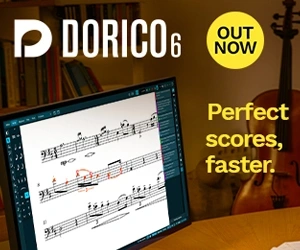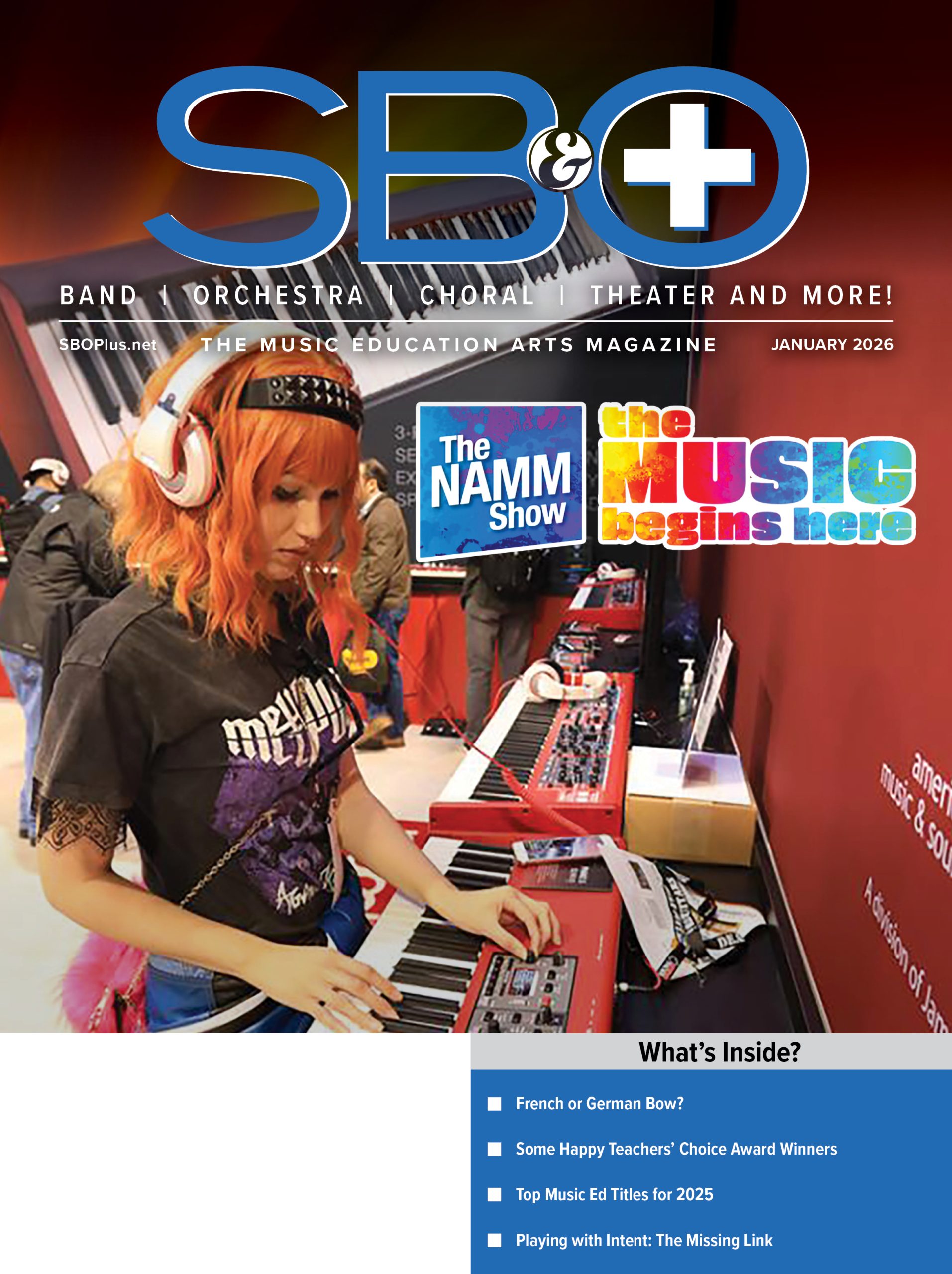By Christian Barnhard II
Teachers of traditional concert bands and orchestras often consider improvisation as an activity reserved for jazz settings. Having limited or non-existent personal experience as improvisers, they often feel uncomfortable teaching improvisation, and believe that it must immediately involve highly complex decision making skill and knowledge. Furthermore, as leaders of ensembles whose primary focus is “re-creative” performance, these teachers often express concern that improvisation will take too much time from the development of traditional instrument technique and literature preparation.
However, beginning with very accessible activities, improvisation can be used as a teaching tool to enhance traditional instruction, while simultaneously allowing opportunities for musical exploration, creativity, and collaboration. The purpose of this article is to introduce ideas that can be readily used in both structured and free improvisation contexts.
Students come to concert band and orchestra rehearsals from the primarily structured environment of other school classes and activities. They have become accustomed to right and wrong answers, and usually crave some level of organization and teacher direction. While music can offer a unique opportunity for emotional exploration, it is often good to begin improvisation activities with a sense of structure, taking students from known to unknown experiences.
Starting with rhythmic improvisation allows students to focus on manipulating a single element of music. Using a unison pitch, such as a standard tuning note, allow students to create rhythm combinations and articulations within the parameters of a specific meter or set of pre-selected rhythms. This activity offers the dual benefit of encouraging creativity while still warming instruments and bodies, and reinforcing proper playing position, intonation, and tone quality.
As an alternative to the usual drill of unison scales and exercises, next allow students to improvise within the structure of activities such as riffs, calls and responses, and drones. For example, a two-measure unison riff in common time can be repeated by the entire ensemble (reinforcing traditional techniques such as bowing and articulation), alternating with two-measure improvisations of any pitches in a major scale. A call and response improvisation reinforcing traditional concepts such as cut-time and minor tonality can be developed with a two-measure call starting on tonic and ending on any other scale degree, followed by a two-measure response starting on any scale degree and ending on tonic. Drones are often helpful for establishing sound intonation and practicing proper balance and blend.
Have half of the ensemble hold a tonic pitch while the other students improvise melodies using scale pitches. If the resulting sound is too cumbersome, ask some students to sing, or allow smaller groups to take turns improvising. Avoiding solo improvisations at this point, however, allows players to have safety in numbers such that they will be more likely to take risks in their decision making and musical development.
In addition to major and minor tonalities, students should have opportunities to improvise in scales such as pentatonic, blues, and other modes. These activities should be related to performance literature as often as possible, leading naturally into opportunities for further improvisation. For example, select an eight-measure excerpt in major mode and help students determine basic harmonic structure of tonic and dominant chords.
Many excerpts of concert band and orchestra literature can be simplified to these two chords, and examples of relevant popular music can also be employed to make connections and help with student motivation. Start by allowing students to improvise rhythmically using only tonic and dominant pitches. This will help them to hear chord changes, while still freeing tone quality, intonation, and playing position. Gradually add opportunities for exploration of chord tones (again, providing limited choices and structure) and non-chord tones (allowing for further decision making within the parameters of a given tonality and chord progression).
Once students become comfortable, have some improvise while others play notated melodies and bass lines of the original compositions. If desired, these improvisations can be gradually expanded into notation practice, student compositions, and even performance opportunities.
Imagine, for example, a concert in which a complete band or orchestra work is performed after an explanation and demonstration of selected melodies and harmonic progressions, including selected improvisations by groups or individual members of the ensemble! Structured improvisation can lead into opportunities for free improvisation, and some students will likely feel more comfortable beginning with free improvisation. Start with very basic activities, such as improvising varied rhythms on a single pitch, pitch bending, pizzicato and other articulation manipulations, and even gentle knocking sounds on the bodies of some instruments.
Lee Higgins and Patricia Shehan Campbell offer 21 free improvisation “events” in their recently published book, Free to Be Musical. The events, or activities, range from semi-structured to less structured, and are designed to work with any number of students in any instrument combination. One example encourages relaxation by allowing students to focus breathing before singing any desired pitch. The resulting tone clusters require careful listening and tuning, and are then transferred to instruments, while maintaining regular intervals of focused, yet relaxed breathing. The authors describe teachers as “facilitators,” and recommend that welcome, safe spaces be provided so that music makers can feel free to explore and take risks in the process of improvisation.
Similarly, Music for People (www.musicforpeople.org) is an organization that promotes a free improvisation approach to music, with the goal of empowering people be active participants rather than passive observers. Slogans of the group include, “no wrong notes,” “play what you sing, sing what you play,” and “quality, not quantity.” Participants of this group offer fine examples of improvisation on traditional and non-traditional instruments, in both solo and accompanying roles.
In addition to offering opportunities for creativity and musical exploration, free improvisation can offer alternatives for students who feel frustrated or bored by some traditional part-writing in ensemble sections such as viola, third clarinet, tuba, or percussion. Expanding definitions of music education can also introduce students to music-making possibilities beyond their time in school band and orchestra programs.
Music educators often advocate for their subject, stating that it is an opportunity for creative student expression. Yet many traditional concert bands and orchestras allow only for “re-creative” performance of single-line notation, as interpreted and dictated by a conductor. Giving students opportunities for improvisation can be a win-win situation in which creativity is encouraged while actually improving instrument technique and musicianship, thus leading to better performances. For music educators who still feel underprepared to teach improvisation, conferences and workshops can provide a wealth of further information and experience. By taking gradual steps to teach and learn improvisation, we can empower our careers and help our students to develop musical skills and knowledge to last a lifetime.
 H. Christian Bernhard II, Ph.D. is associate professor of Music Education at the State University of New York at Fredonia, where he teaches undergraduate courses in instrumental music methods and conducting, as well as graduate courses in music education history, philosophy, psychology, assessment, and curriculum. He holds degrees in music performance and education from The Peabody Conservatory of Music, The University of North Carolina at Chapel Hill, and The University of North Carolina at Greensboro, and taught band and orchestra in the public schools of Raleigh, North Carolina.
H. Christian Bernhard II, Ph.D. is associate professor of Music Education at the State University of New York at Fredonia, where he teaches undergraduate courses in instrumental music methods and conducting, as well as graduate courses in music education history, philosophy, psychology, assessment, and curriculum. He holds degrees in music performance and education from The Peabody Conservatory of Music, The University of North Carolina at Chapel Hill, and The University of North Carolina at Greensboro, and taught band and orchestra in the public schools of Raleigh, North Carolina.



























